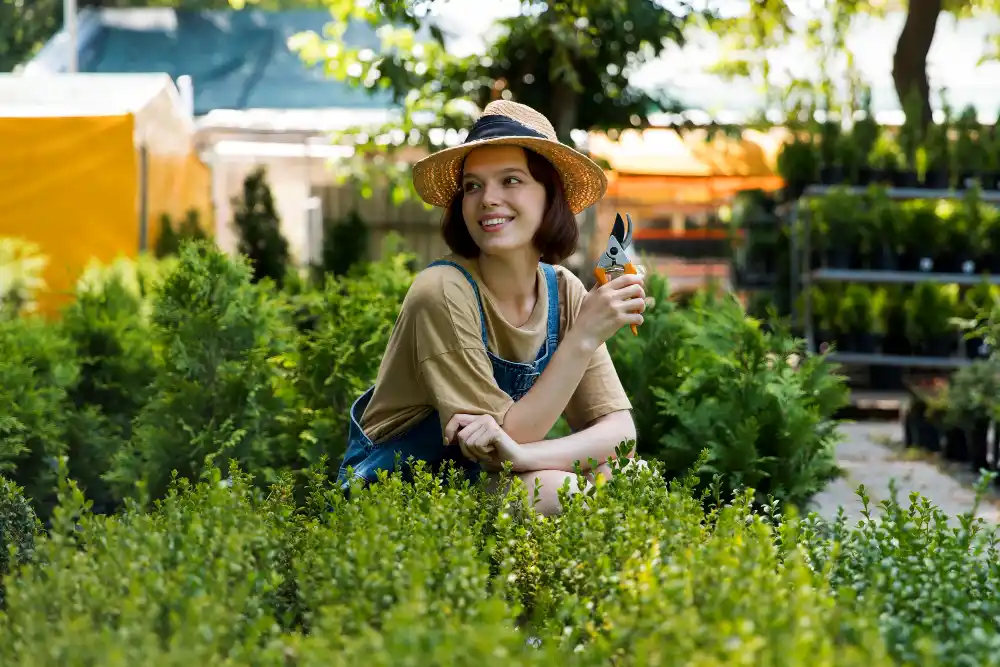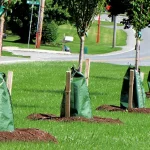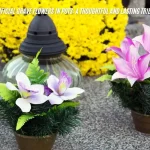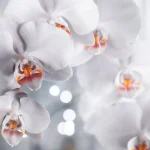Fancy turning your outdoors into more than just a cosy sitting area? An aromatherapy garden is one of your best options to create your very own heaven in your backyard.
Imagine how calming spending an afternoon around the aromatic flowers can be. Imagine how much mental peace and calmness such a place can provide.
Sounds good, right, so why not opt for making this dream a reality? This article provides a step-by-step guide to help you create your aromatic green calming haven.
Choose the Right Location
When choosing a location, consider places where you typically spend considerable time.
Moreover, the breeze direction must be ascertained to guarantee the aromatic benefits of the plants wafting smoothly through the surrounding area.
Avoid shadowy locations on principle. Using them will only restrict the plants’ growth and less growth means less fragrance.
Lastly, ensure that the gardening spot has sufficient drainage to prevent waterlogging. This will protect your garden’s overall wellness and purpose.
Select Aromatic Plants
Who doesn’t love lavender, jasmine, and rosemary for their signature scents? They are the perfect choices for your garden.
When selecting plants, remember that local terrain and soil conditions have a profound effect on their growth and aroma.
Therefore, blend various herbs and blooms to design a captivating atmosphere. Make sure to prioritise low-maintenance plants to ensure a charming and unassuming garden.
Moreover, opt for local varieties that naturally flourish with minimal care and watering.
Plan the Garden Layout
Start by putting tall plants like hollyhocks or sunflowers in the back since they are great for adding some height and colour. Plant smaller ones at the front, like thyme and marigolds, to show off their bright looks.
This way, your garden has layers that grab attention from all around. Not to mention, every plant gets its own space to grow happily.
Adding winding paths or stepping stones will create an inviting atmosphere. Remember that plants need room to grow strong, so leave enough space between them for good airflow.
Mix in some evergreens with seasonal flowers for a constant aroma all year long and inter-hardy plants to keep the scent going in cold months.
Soil Preparation and Planting
Next, you should focus on the soil you have in your garden and whether it’s suitable for these types of plants. Therefore, start by checking the pH levels and tweak them if needed. They require slightly acidic to neutral soil.
In addition, the soil must be able to drain well, because aromatic plants will not survive soggy conditions. A simple mixture of sand or gravel in the soil will help tremendously balance this out.
When planting, pay attention to depth and spacing. Dig holes twice as wide as the roots and keep their tops level with the soil to help them spread and absorb nutrients.
Moreover, leave about a foot between smaller plants and two to three feet for bigger ones, giving them room to breathe and stay healthy.
Furthermore, some organic compost should be added before planting to boost nutrients and help retain water. After planting, water them well. Overall, deep watering encourages roots to grow further, making your plants stronger during dry spells.
Watering and Maintenance
Establish a consistent watering schedule to prolong the scent and longevity of fragrant plants. This routine requires giving them a thorough yet considered watering session that furnishes their roots with a solid foundation to withstand dry spells.
Avoid drowning the roots, as too much water does more harm than good. Top up the soil only when it begins to dry out. A layer of mulch works wonders, locking in moisture while keeping weeds from taking over.
Regular pruning isn’t just about looks. It encourages stronger growth and intensifies the fragrance, turning each plant into a powerhouse of scent. If pests appear, skip the harsh chemicals. Neem oil or a mild dish soap solution can keep infestations in check.
When spring rolls in, opt for natural fertilisers. They nourish the soil and set the stage for lush, vibrant growth all season long. Stick to these simple habits, and your aromatherapy garden will remain a serene escape, no matter the time of year.
Harvesting and Using Aromatic Plants
Time to harvest the rewards of all your hard work. This will also ensure your flowers’ continuous cycle of growth, but most importantly, you can use those plants’ scents in your day-to-day life.
Optimal Harvesting Techniques
This depends heavily on timing. Proper technique also guarantees the health and continuous pleasant aroma of your greens.
Next, harvest herbs ideally in the morning. That’s when their essential oils are at their strongest.
Lastly, use sharp scissors when pruning. This ensures clean cuts and helps the plants to continue to flourish.
Drying and Storing for Teas, Sachets, and Oils
Drying herbs requires precise attention. For consumption as tea, small bunches of leaves should be suspended upside down in a dark, ventilated room. Simply leave them for 1 or 2 weeks at a temperature of 21°C.
For sachet production, ensure the herbs have dried completely to prevent mould growth, and then crush them slightly before sealing them in fabric pouches.
If you’re looking to extract your favourite essential oils, simply hang the herbs up or use a low-temperature dehydrator only if you store the used tissues in a glass container.
Furthermore, dried herbs can be stored securely in glass jars and kept cool and dark to prolong their freshness and potency.
Creative Applications and Healing Engagement
Being able to mix fresh herbs into a custom blend or transforming chrysanthemum into aesthetically pleasing potpourri provides another dimension. In particular, lavender serves as an excellent illustration for diffusion into sacs for air clarification.
Harvesting these delicate succulents tends to be gentle and subtle. Hence, it generates a valuable pathway to connecting with both nature and a balanced wellness foundation.
Creating a Relaxation Space
That’s what it’s all about, right? The right type of seating can do wonders for your peace and tranquillity.
First off, rattan or teak furniture is an excellent choice. That’s because they harmonise with the garden’s surroundings easily, and they provide a warm, welcoming atmosphere.
Moreover, these materials withstand the elements very effectively and also provide a unique rustic appeal. To complete the setting, don’t forget to include some plush cushions and cosy throw blankets. Your comfort will then be complete.
Next, introduce elements of shade to improve the appeal even more. Think pergolas or large umbrellas. What they’ll do is create a comfortable and sheltered spot for you to relax in.
Furthermore, adding water features or wind chimes into your garden design can significantly elevate the overall sense of relaxation.
In particular, a fountain has a profound impact on stress levels, transporting you to a state of serenity. Moreover, wind chimes, with their soft, melodic tones, blend discreetly with the garden’s fragrance to craft a sanctuary for peaceful contemplation.
Incorporating Other Relaxation Elements
Adding meditation stones and yoga mats can transform an aromatherapy garden into a relaxing spot, as they are great for unwinding and calming exercises.
Picture walking on a path of pebbles, grass, or wooden planks. It connects you to the garden, making exploring a unique experience. This path gently guides you, boosting the atmosphere.
Fairy lights or lanterns make the garden magical at night, lighting up paths and seats with warmth. Aromatic candles or incense blend beautifully with garden scents for a sensory delight, feeling both calming and luxurious.
Thoughtfully placing relaxation items enhances the experience, making the garden an ideal spot to unwind.
Seasonal Care and Plant Rotation
Every new season your garden demands a different approach.
First, cut back on watering in winter. Plants don’t require much water during the colder months. Next, let the soil dry out between every watering. This will help avoid soggy roots and protect your greens.
Once spring rolls around, start giving them more water and maybe move things around to keep those scents popping and the garden feeling fresh.
If you want to keep your garden smelling fresh all year, swap out plants when the seasons change. This method keeps the scents fresh and helps the plants stay healthy. Alternatively, you could bring in summer flowers like geraniums for their bright look and nice smell.
In winter, go for evergreens to keep the garden fragrant and looking good. Frost covers are a great solution to avoid freezing or simply moving pots somewhere sheltered till the weather warms up.
During hot summer days, give them some shade or move them to cooler spots so they do not dry out.
Moreover, check on your plants regularly to spot any problems early, letting you fix things quickly and swap plants if needed. By doing these little things each season, your garden can stay a chill, inviting place all year round.
You can always resort to the help of qualified gardening experts to realise the aromatic green haven of your dreams.
Conclusion
So there you have it! Following the above-mentioned tips closely and you’ll create a great aromatherapy garden in no time.
Keep in mind that plant selection matters. Work from a plan and steady care for your garden to keep it flourishing. Invite friends and family over so they can appreciate the results as well.
Good luck to you and happy gardening!










